Back to activities
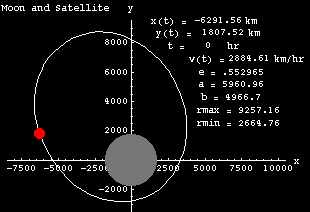
Kepler's Laws
Data below is a sample set of positional data of Explorer
35
in its eleiptical orbit around the Moon
(Reference: Activities in Astronomy by D.Hoff, L.Kelsey
and J.Neff)
Kepler's Laws for the planets in an elliptical orbit
around the Sun
1) Each planet moves around the Sun in an orbit that is an
ellipse with the Sun at one focus.
2) Each planet moves so that an imaginary line joining the
Sun and the planet sweeps out equal areas in equal times.
3) The squares of the periods of time required for for a planet
to complete a trip around the Sun is proportional to the Cube
of the average distance from the Sun.
Kepler's Laws WWW sites
Activity No 13
Kepler's Laws for a satellite in an elliptical orbit
around the Moon
1) Each satellite moves around the Moon in an orbit that is
an ellipse with the Moon at one focus.
2) Each satellite moves so that an imaginary line joining
the Moon and the satellite sweeps out equal areas in equal times.
3) The squares of the periods of time required for for a planet
to complete a trip around the Moon is proportional to the cube
of the average distance from the Moon.
Activity Report
Use the above animation to answer the following questions.
( I am still working on it )
Kepler's 2nd Law
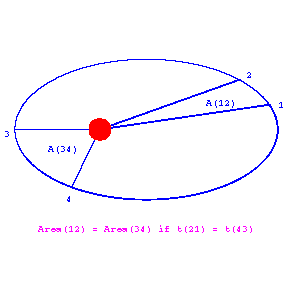
Pictures (1 and 2 )
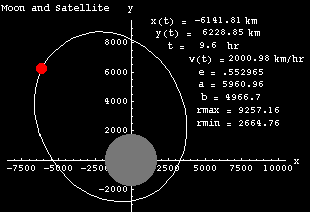

Pictures (3 and4)
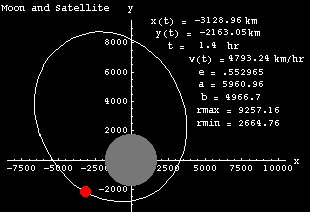
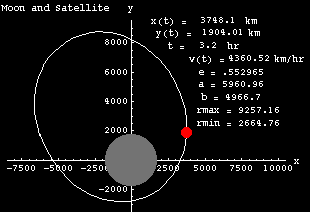
Instructions: Use the above pictures (1-2) and (3-4) to calculate
the following values in step 1 and step 2. Note: (t2-t1) = 1.8
hrs and (t4-t3) = 1.8 hrs.

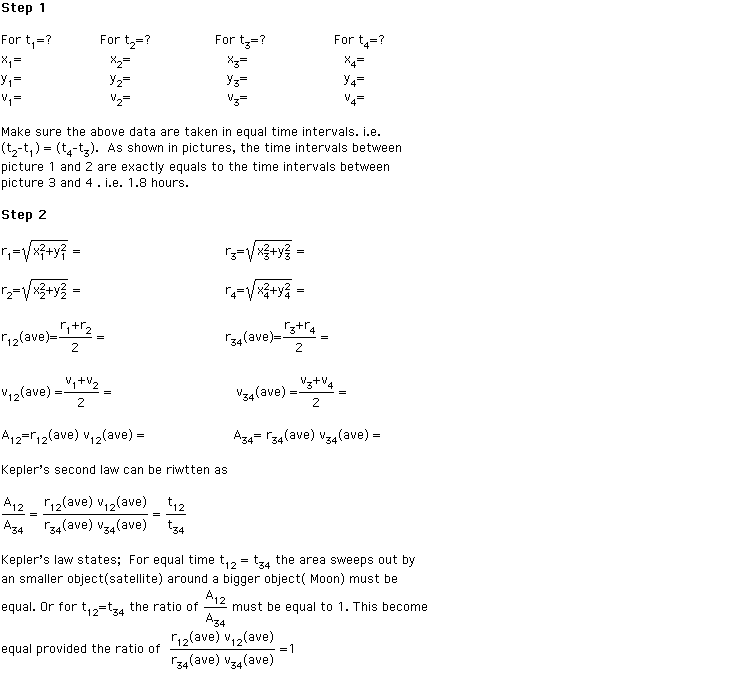
Question 1: Are the above ratio approximately equal to 1.
If not, then what is the source of our errors. Explain. Calculate
the percentage error.
Question 2: Is the angular momentum conserved. Explain the
consevation of an agular momentum.
Question 3: Explain why the spacing between dots in this fiqure
are not equal.

Kepler's 3rd Law
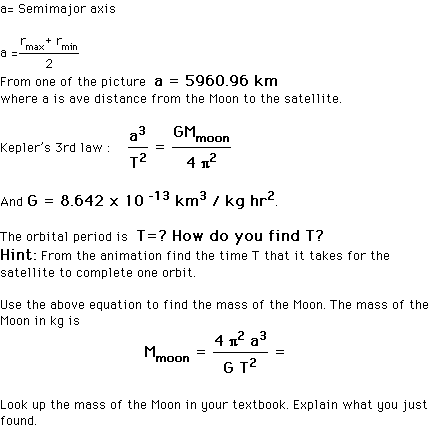
Back to activities



